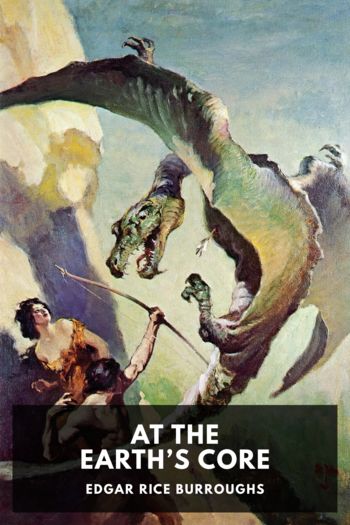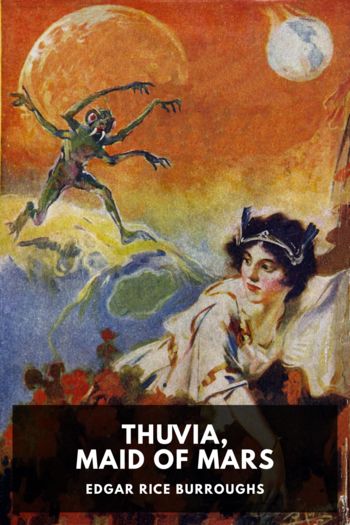The Land That Time Forgot by Edgar Rice Burroughs (short books to read .txt) 📕

Description
The Land That Time Forgot opens with the discovery near Greenland of a floating thermos flask containing a manuscript by castaway Tyler Bowen, Jr. The document recounts a series of adventures that starts with a sea battle against a German U-boat and ends on a mysterious island populated by hostile prehistoric animals and people.
The second part of the book, “The People That Time Forgot,” continues the story with the tale of Tom Billings, who has been sent on a mission to rescue Bowen after his manuscript was discovered. He flies solo over the mountainous cliffs that encircle the island and is attacked by a monstrous flying reptile, forcing him to crash-land. Billings then attempts to make his way on foot back to the rest of his party while contending with dangerous inhabitants from different stages of human development.
The final installment of the story, “Out of Time’s Abyss,” reveals what happened to Bradley, a crew member who was sent on a scouting expedition earlier in the story and was never heard from again.
This trilogy of short novels was originally published serially in 1918 in Blue Book Magazine. In 1924 they were published in a single volume by A. C. McClurg. The Burroughs fan community seems to fall into two camps about whether the story comprises three separate novellas, or whether it’s a single novel divided into three parts. This production follows the 1924 edition in combining the three into a single novel.
Read free book «The Land That Time Forgot by Edgar Rice Burroughs (short books to read .txt) 📕» - read online or download for free at americanlibrarybooks.com
- Author: Edgar Rice Burroughs
Read book online «The Land That Time Forgot by Edgar Rice Burroughs (short books to read .txt) 📕». Author - Edgar Rice Burroughs
It was very nice of her to say that, and I appreciated it. I felt that she was a mighty nice little girl whose friendship anyone might be glad to have; but I wished that when she touched me, those peculiar thrills would not run through me. It was most discomforting, because it reminded me of love; and I knew that I never could love this half-baked little barbarian. I was very much interested in her account of the Wieroo, which up to this time I had considered a purely mythological creature; but Ajor shuddered so at even the veriest mention of the name that I was loath to press the subject upon her, and so the Wieroo still remained a mystery to me.
While the Wieroo interested me greatly, I had little time to think about them, as our waking hours were filled with the necessities of existence—the constant battle for survival which is the chief occupation of Caspakians. To-mar and So-al were now about fitted for their advent into Kro-lu society and must therefore leave us, as we could not accompany them without incurring great danger ourselves and running the chance of endangering them; but each swore to be always our friend and assured us that should we need their aid at any time we had but to ask it; nor could I doubt their sincerity, since we had been so instrumental in bringing them safely upon their journey toward the Kro-lu village.
This was our last day together. In the afternoon we should separate, To-mar and So-al going directly to the Kro-lu village, while Ajor and I made a detour to avoid a conflict with the archers. The former both showed evidence of nervous apprehension as the time approached for them to make their entry into the village of their new people, and yet both were very proud and happy. They told us that they would be well received as additions to a tribe always are welcomed, and the more so as the distance from the beginning increased, the higher tribes or races being far weaker numerically than the lower. The southern end of the island fairly swarms with the Ho-lu, or apes; next above these are the Alus, who are slightly fewer in number than the Ho-lu; and again there are fewer Bo-lu than Alus, and fewer Sto-lu than Bo-lu. Thus it goes until the Kro-lu are fewer in number than any of the others; and here the law reverses, for the Galus outnumber the Kro-lu. As Ajor explained it to me, the reason for this is that as evolution practically ceases with the Galus, there is no less among them on this score, for even the cos-ata-lo are still considered Galus and remain with them. And Galus come up both from the west and east coasts. There are, too, fewer carnivorous reptiles at the north end of the island, and not so many of the great and ferocious members of the cat family as take their hideous toll of life among the races further south.
By now I was obtaining some idea of the Caspakian scheme of evolution, which partly accounted for the lack of young among the races I had so far seen. Coming up from the beginning, the Caspakian passes, during a single existence, through the various stages of evolution, or at least many of them, through which the human race has passed during the countless ages since life first stirred upon a new world; but the question which continued to puzzle me was: What creates life at the beginning, cor sva jo?
I had noticed that as we traveled northward from the Alus’ country the land had gradually risen until we were now several hundred feet above the level of the inland sea. Ajor told me that the Galus country was still higher and considerably colder, which accounted for the scarcity of reptiles. The change in form and kinds of the lower animals was even more marked than the evolutionary stages of man. The diminutive ecca, or small horse, became a rough-coated and sturdy little pony in the Kro-lu country. I saw a greater number of small lions and tigers, though many of the huge ones still persisted, while the woolly mammoth was more in evidence, as were several varieties of the Labyrinthadonta. These creatures, from which God save me, I should have expected to find further south; but for some unaccountable reason they gain their greatest bulk in the Kro-lu and Galu countries, though fortunately they are rare. I rather imagine that they are a very early life which is rapidly nearing extinction in Caspak, though wherever they are found, they constitute a menace to all forms of life.
It was mid-afternoon when To-mar and So-al bade us goodbye. We were not far from Kro-lu village; in fact, we had approached it much closer than we had intended, and now Ajor and I were to make a detour toward the sea while our companions went directly in search of the Kro-lu chief.
Ajor and I had gone perhaps a mile or two and were just about to emerge from a dense wood when I saw that ahead of us which caused me to draw back into concealment, at the same time pushing Ajor behind me. What I





Comments (0)